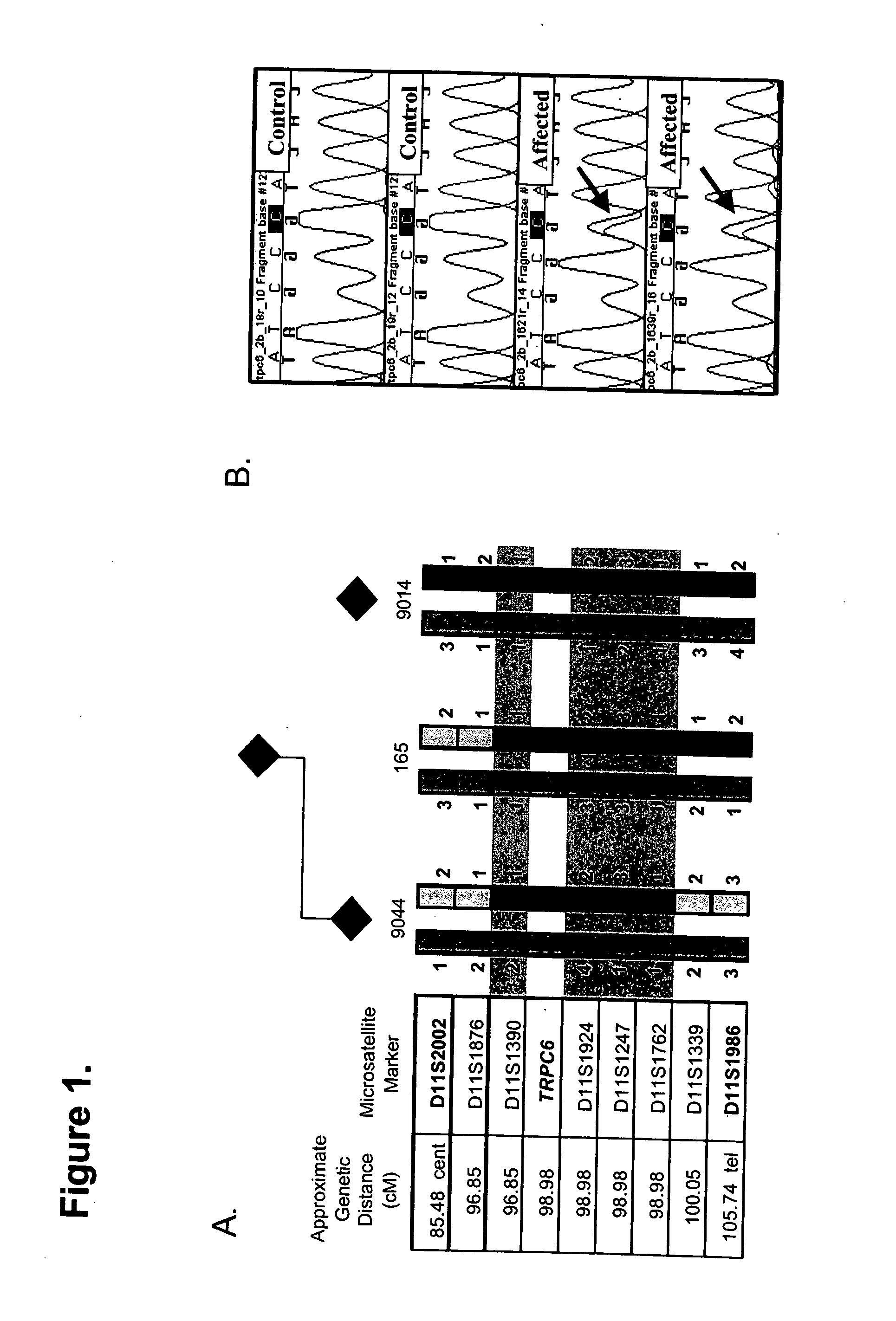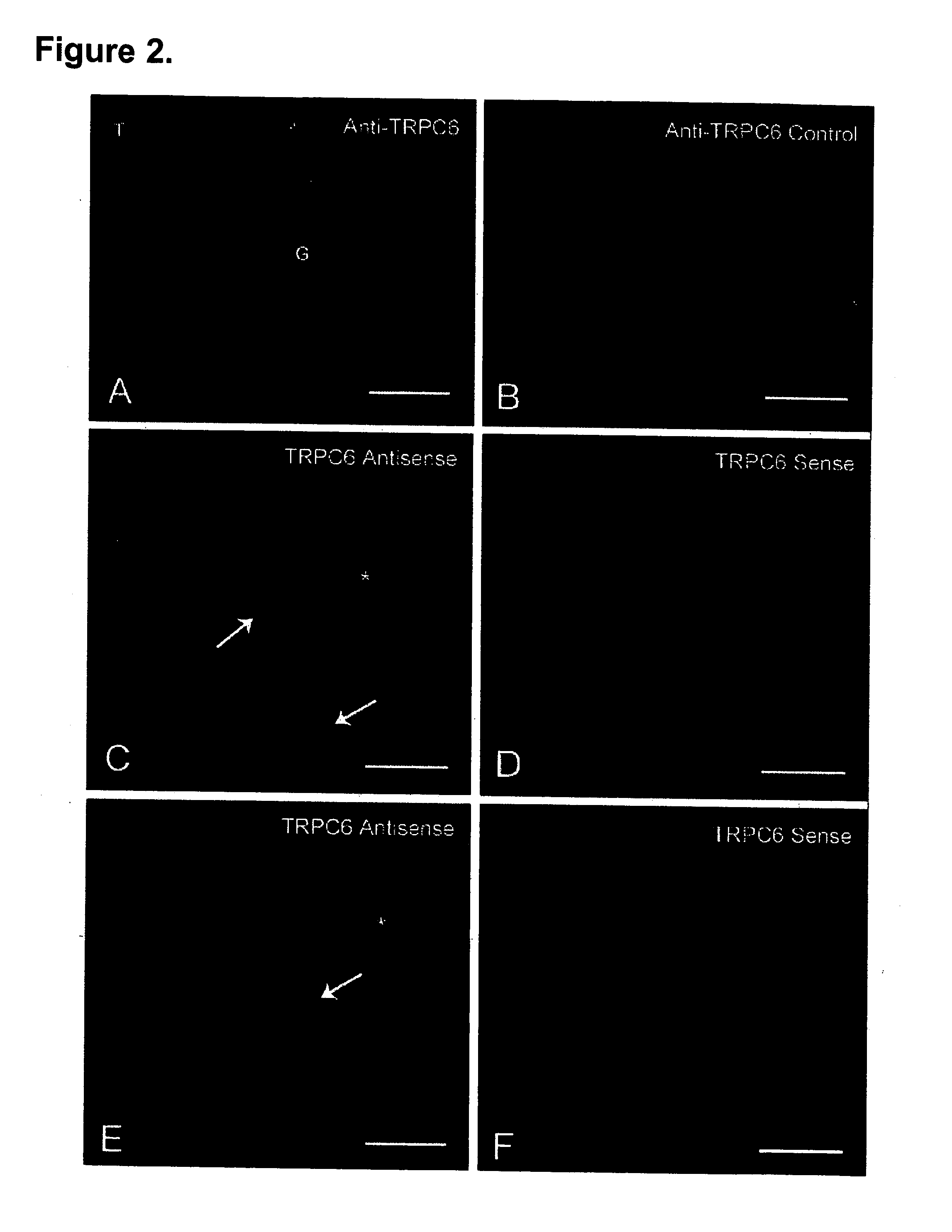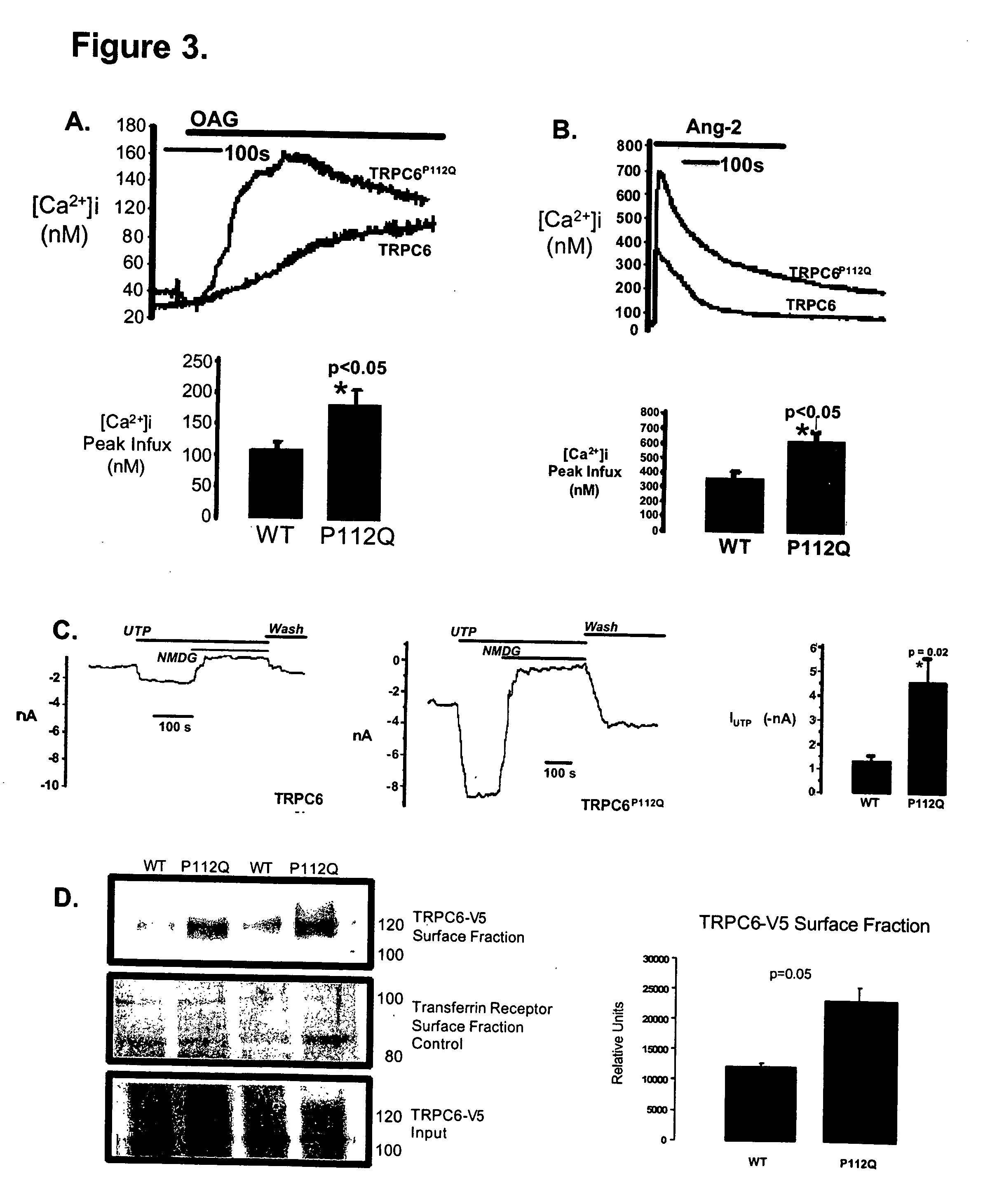TRPC6 involved in glomerulonephritis
- Summary
- Abstract
- Description
- Claims
- Application Information
AI Technical Summary
Benefits of technology
Problems solved by technology
Method used
Image
Examples
example 1
Identification of Altered Gene in Affected Kindred
[0058] Haplotype analyses reduced the minimal candidate region to an approximate 2.1 centiMorgan (cM) area defined by critical recombination events at D11S1390 and D11S1762 (FIG. 1A). This region contains several known genes as well as multiple novel and predicted genes which were systematically screened for mutations by direct sequencing. After examination of 42 other candidate genes, TRPC6 (GenBank Accession No. NP—004612) emerged as a candidate based on reports of detection of TRPC6 mRNA in the kidney (9, 10). We therefore sequenced each of the 13 exons of the TRPC6 gene along with their intron / exon boundaries. Primer sequences are provided (FIG. 9). As shown in FIG. 1B, we discovered a missense mutation (C335A) in exon 2, from affected individuals, causing a proline to glutamine substitution at position 112 within the first ankyrin repeat of the TRPC6 protein. This variant was present in all of the affected individuals (20 affec...
example 2
Immunohistological Determination of Protein Expression and FISH Determination of mRNA Expression
[0059] Our previous finding that familial FSGS does not recur in affected patients after renal transplantation indicates a critical role for the kidney in disease pathogenesis (11). While expression of TRPC6 mRNA has been reported in multiple tissues including the kidney, its distribution in kidney is not clear (9, 10). Therefore, to define the spatial distribution of TRPC6 protein expression in human kidney, we performed immunohistochemistry of normal human renal cortex with rabbit antibody raised against a specific human TRPC6 peptide (FIGS. 2A and 2B). Immunofluorescence staining revealed TRPC6 expression throughout the kidney in glomeruli and tubules. This is consistent with a recent study detecting TRPC6 mRNA in isolated glomeruli (12). Expression of TRPC6 in glomeruli is particularly noteworthy as abnormal podocyte function appears to be a final common pathway in a variety of prote...
example 3
Mutation Activates Channel Activity
[0060] To determine the effect of the P112Q mutation on TRPC6 function, we studied HEK 293 cells (human kidney cells) transfected with mutant (TRPC6P112Q) or wild-type (WT) TRPC6 (14). The WT TRPC6 was cloned from a human kidney cDNA library. On Western blots, the abundance and mobility of the P112Q mutant was comparable to that of WT TRPC6 (FIG. 6). Diacylglycerol (DAG) is a potent activator of TRPC6 (15). We therefore measured the intracellular calcium concentration ([Ca+2]i) using Fura fluorescence in HEK 293 cells expressing either the WT or TRPC6P112Q after exposure to the DAG analogue OAG (1-oleoyl-2-acetyl-sn-glycerol). OAG perfusion increased late Ca+2 transients in cells transfected with WT TRPC6 as expected (FIG. 3A and FIG. 7). Peak intracellular concentrations were significantly higher in cells expressing the TRPC6P112Q compared with WT controls ([Ca2+]i TRPC6P112Q=181±25 nM vs. [Ca2+]i WT TRPC6=106±15 nM; p<0.05).
PUM
| Property | Measurement | Unit |
|---|---|---|
| Mass | aaaaa | aaaaa |
| Capacitance | aaaaa | aaaaa |
| Capacitance | aaaaa | aaaaa |
Abstract
Description
Claims
Application Information
 Login to View More
Login to View More - R&D
- Intellectual Property
- Life Sciences
- Materials
- Tech Scout
- Unparalleled Data Quality
- Higher Quality Content
- 60% Fewer Hallucinations
Browse by: Latest US Patents, China's latest patents, Technical Efficacy Thesaurus, Application Domain, Technology Topic, Popular Technical Reports.
© 2025 PatSnap. All rights reserved.Legal|Privacy policy|Modern Slavery Act Transparency Statement|Sitemap|About US| Contact US: help@patsnap.com



